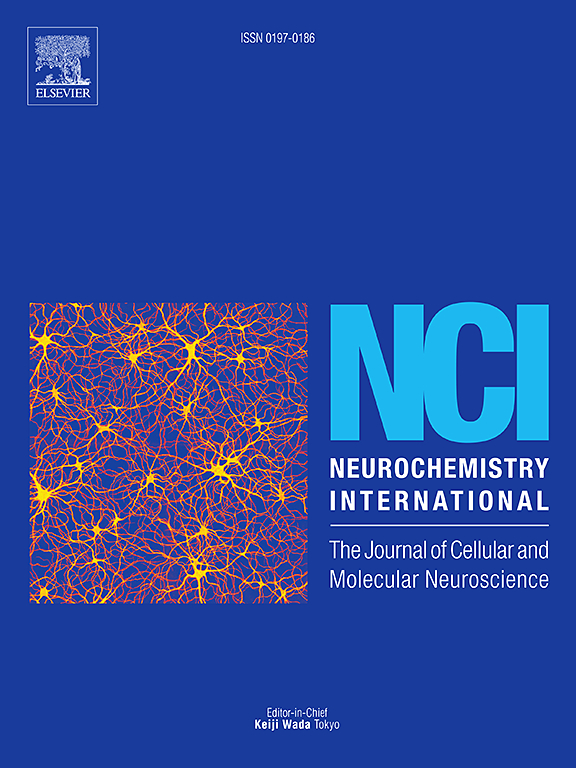迷走神经刺激可抑制泛凋亡,并通过 Sirt1 依赖性方式促进缺血性脑卒中的神经功能恢复
IF 4
3区 医学
Q2 BIOCHEMISTRY & MOLECULAR BIOLOGY
引用次数: 0
摘要
迷走神经刺激(VNS)可促进缺血性脑卒中(CIS)后神经功能的恢复,但其机制尚不清楚。PANoptosis是一种新的炎性程序性细胞死亡形式,可能在CIS的进展中发挥作用。我们之前的研究表明Sirt1通过调节各种程序性细胞死亡途径对CIS发挥神经保护作用。VNS是否以及如何通过Sirt1调控PANoptosis,从而影响CIS的恢复,尚需明确。本研究旨在阐明VNS在CIS后神经元PANoptosis中的调节作用,并阐明其潜在机制。建立大鼠大脑中动脉闭塞/再灌注(MCAO/R)模型和原代神经元氧糖剥夺/再氧合(OGD/R)模型,评估CIS后神经元PANoptosis的发生情况。在两个独立的急性缺血性卒中(AIS)患者队列中测量循环Sirt1水平。用VNS激活Sirt1,评估其对PANoptosis和神经恢复的影响。我们发现CIS诱导神经元PANoptosis,并通过VNS干预逆转。AIS患者血清Sirt1水平显著升高,且与梗死面积和美国国立卫生研究院卒中量表评分呈正相关。相比之下,Sirt1在啮齿类动物模型和AIS患者的脑组织中下调。这种表达水平的差异可归因于外周巨噬细胞产生Sirt1的增加。VNS上调Sirt1的表达,而Sirt1抑制剂EX527则否定了VNS对PANoptosis、梗死体积和神经功能恢复的影响。这些发现表明,VNS可能以sirt1依赖的方式抑制CIS后PANoptosis并促进神经功能恢复,这可能是卒中治疗的一个新的潜在靶点。Sirt1也可以作为AIS患者分层的血液生物标志物,具有独立的预后价值。本文章由计算机程序翻译,如有差异,请以英文原文为准。
Vagus nerve stimulation inhibits PANoptosis and promotes neurofunctional recovery of cerebral ischemic stroke in a Sirt1-dependent manner
Vagus nerve stimulation (VNS) can promote neurofunctional recovery following cerebral ischemic stroke (CIS), but the underlying mechanism remains unclear. PANoptosis, a novel form of inflammatory programmed cell death, may play a role in the progression of CIS. Our previous studies have indicated that Sirt1 exerts neuroprotection against CIS by modulating various programmed cell death pathways. It needs to be clarified whether and how VNS regulates PANoptosis through Sirt1, thereby affecting the recovery of CIS. This study aims to clarify the role of VNS in modulating neuronal PANoptosis following CIS, and elucidate its underlying mechanisms. Models of middle cerebral artery occlusion/reperfusion (MCAO/R) in rats and oxygen-glucose deprivation/reoxygenation (OGD/R) in primary neurons were established to assess the occurrence of neuronal PANoptosis following CIS. Circulating Sirt1 levels were measured in two independent cohorts of acute ischemic stroke (AIS) patients. VNS was administered to activate Sirt1, and its effects on PANoptosis and neurological recovery were evaluated. We found that neuronal PANoptosis was induced following CIS, which was reversed via VNS intervention. Sirt1 levels in serum of AIS patients were significantly increased, and positively correlated with infarct volume and National Institutes of Health Stroke Scale scores. In contrast, Sirt1 was downregulated in brain tissue from rodent models and AIS patients. This discrepancy in expression levels can be attributed to the increased generation of Sirt1 by peripheral macrophages. VNS upregulated Sirt1 expression, while the Sirt1 inhibitor EX527 negated the effects of VNS on PANoptosis, infarct volume, and neurofunctional recovery. These findings indicate that VNS may inhibit PANoptosis and promote neurofunctional recovery following CIS in a Sirt1-dependent manner, which may be a new potential target for stroke therapy. Sirt1 may also serve as a blood biomarker for patient stratification with independent prognostic value in AIS patients.
求助全文
通过发布文献求助,成功后即可免费获取论文全文。
去求助
来源期刊

Neurochemistry international
医学-神经科学
CiteScore
8.40
自引率
2.40%
发文量
128
审稿时长
37 days
期刊介绍:
Neurochemistry International is devoted to the rapid publication of outstanding original articles and timely reviews in neurochemistry. Manuscripts on a broad range of topics will be considered, including molecular and cellular neurochemistry, neuropharmacology and genetic aspects of CNS function, neuroimmunology, metabolism as well as the neurochemistry of neurological and psychiatric disorders of the CNS.
 求助内容:
求助内容: 应助结果提醒方式:
应助结果提醒方式:


